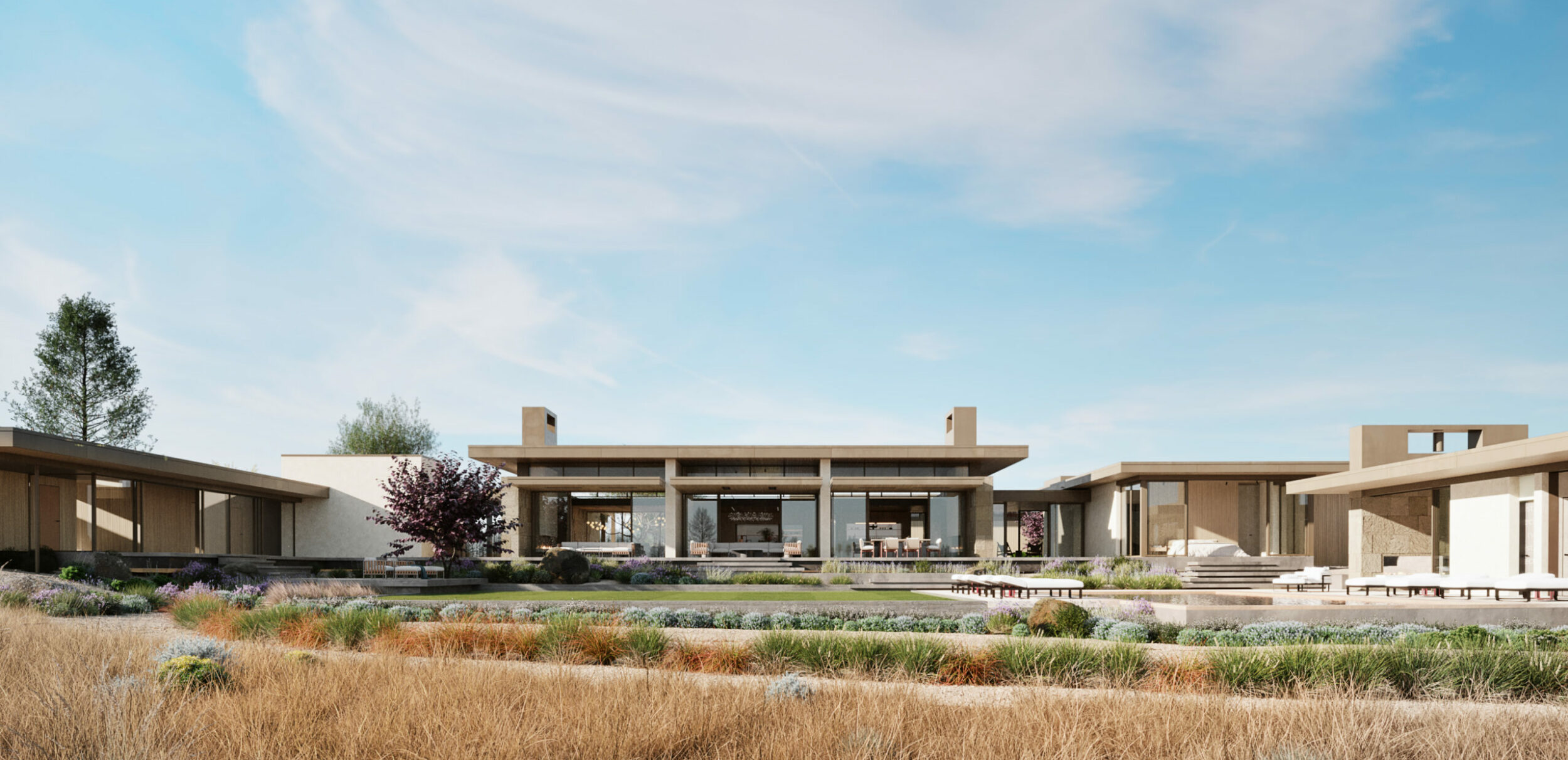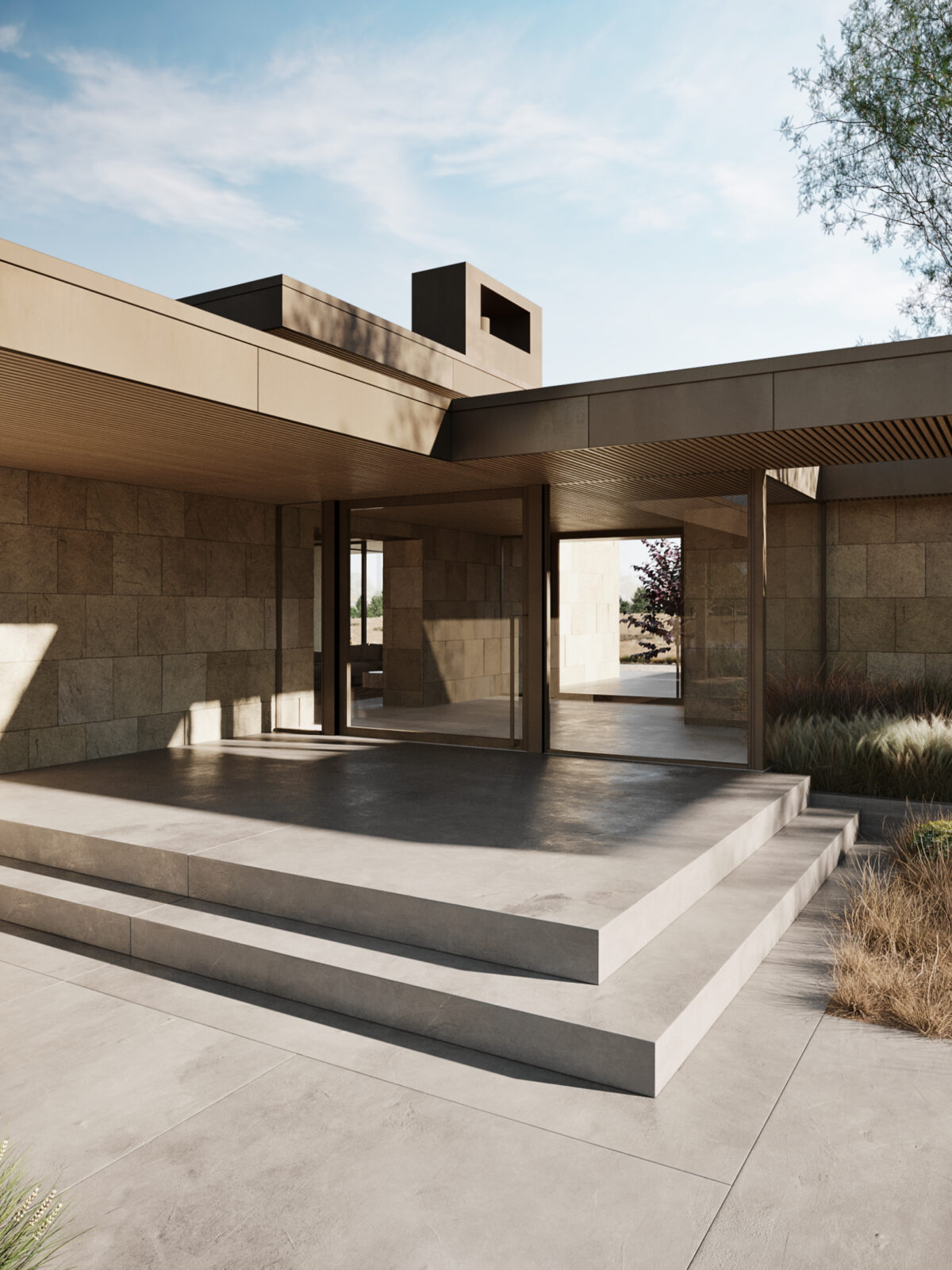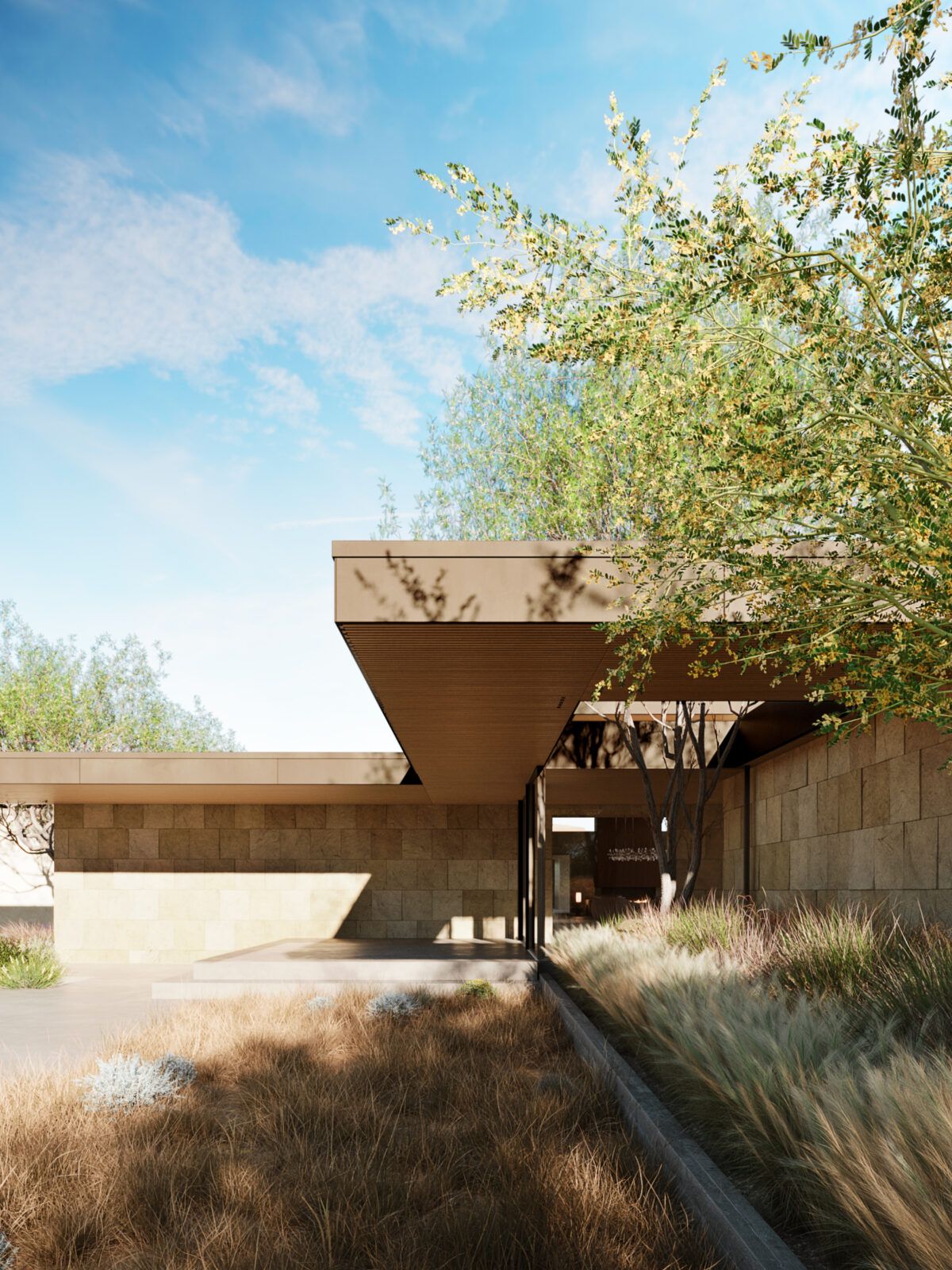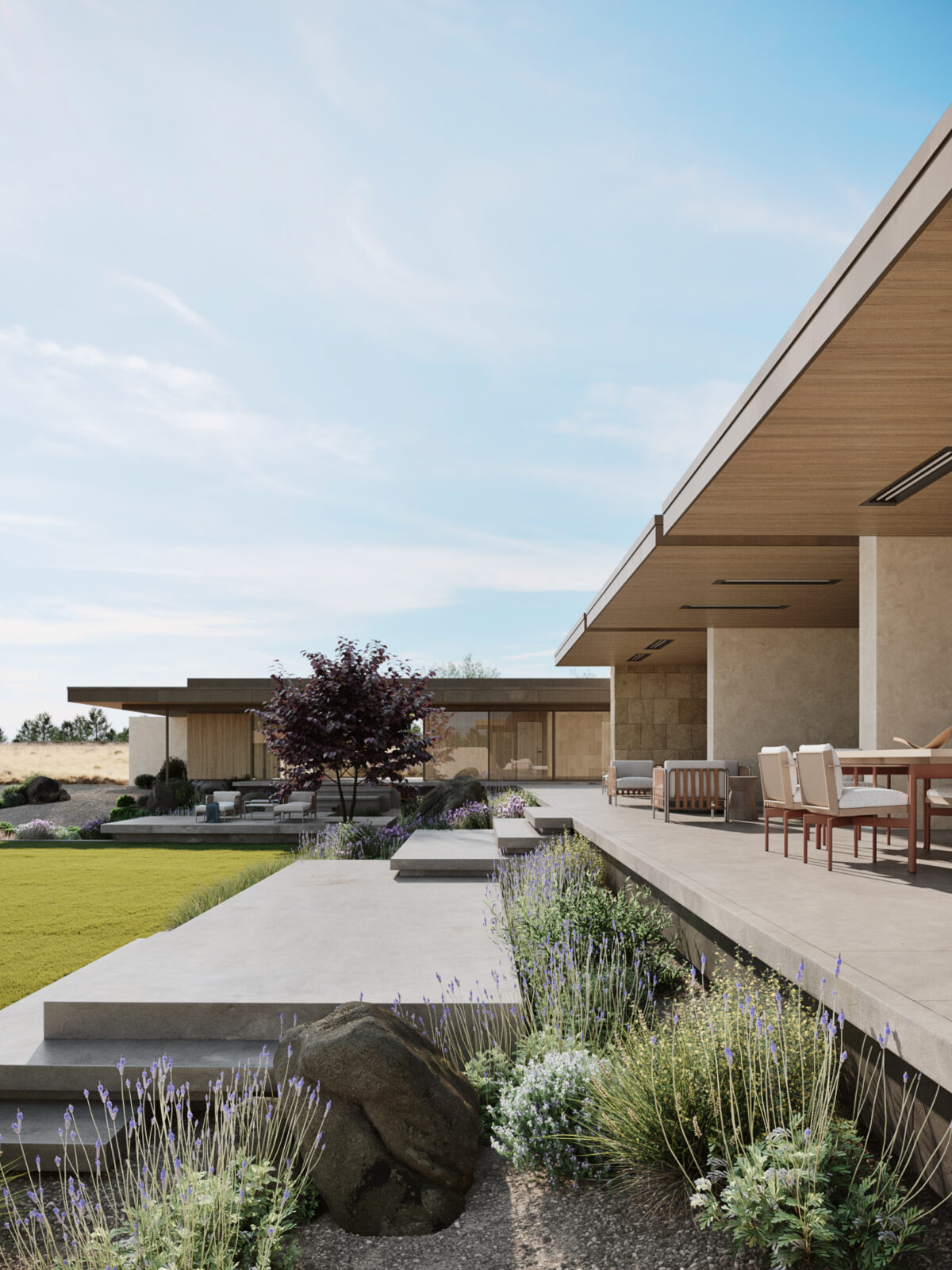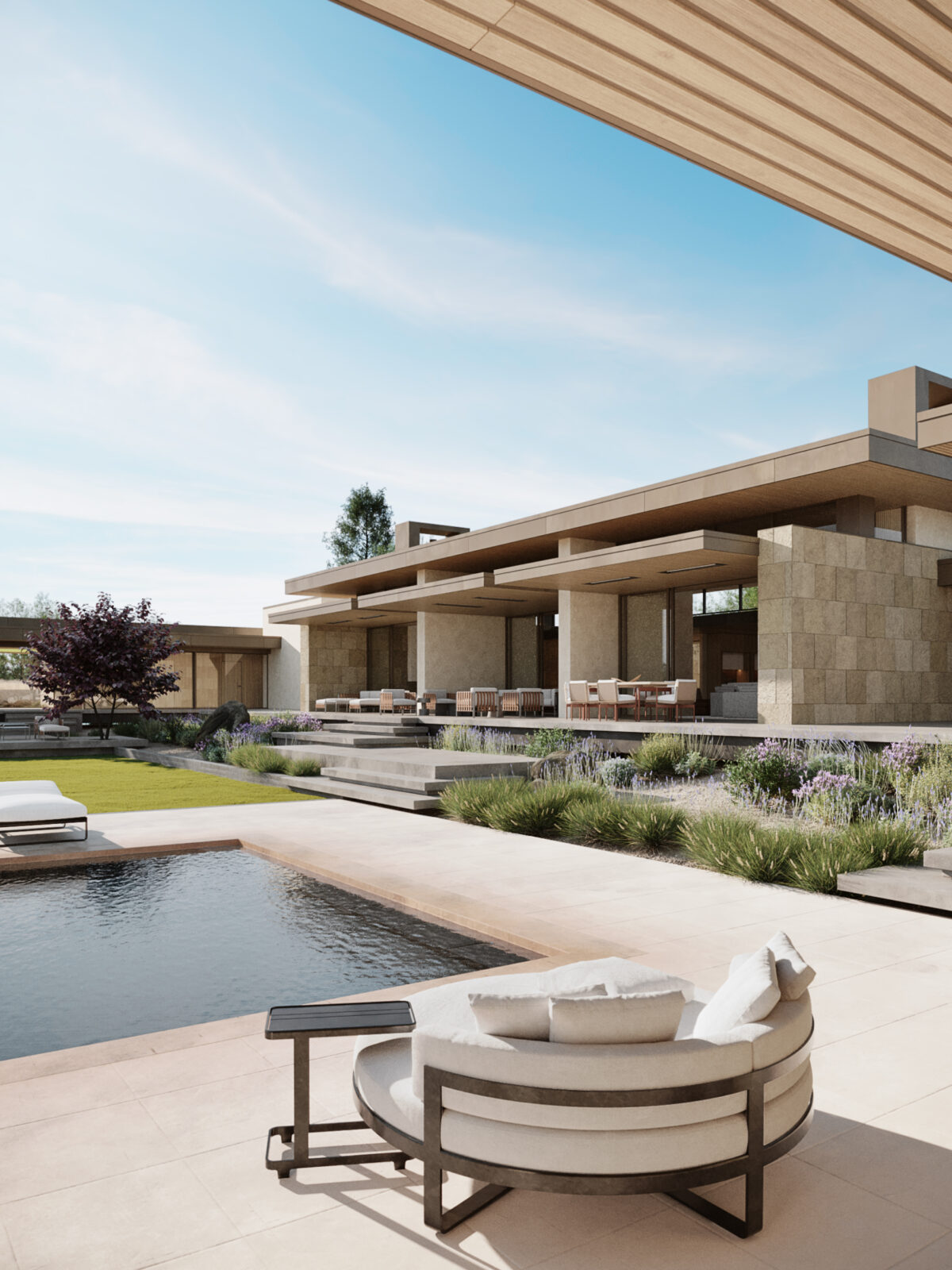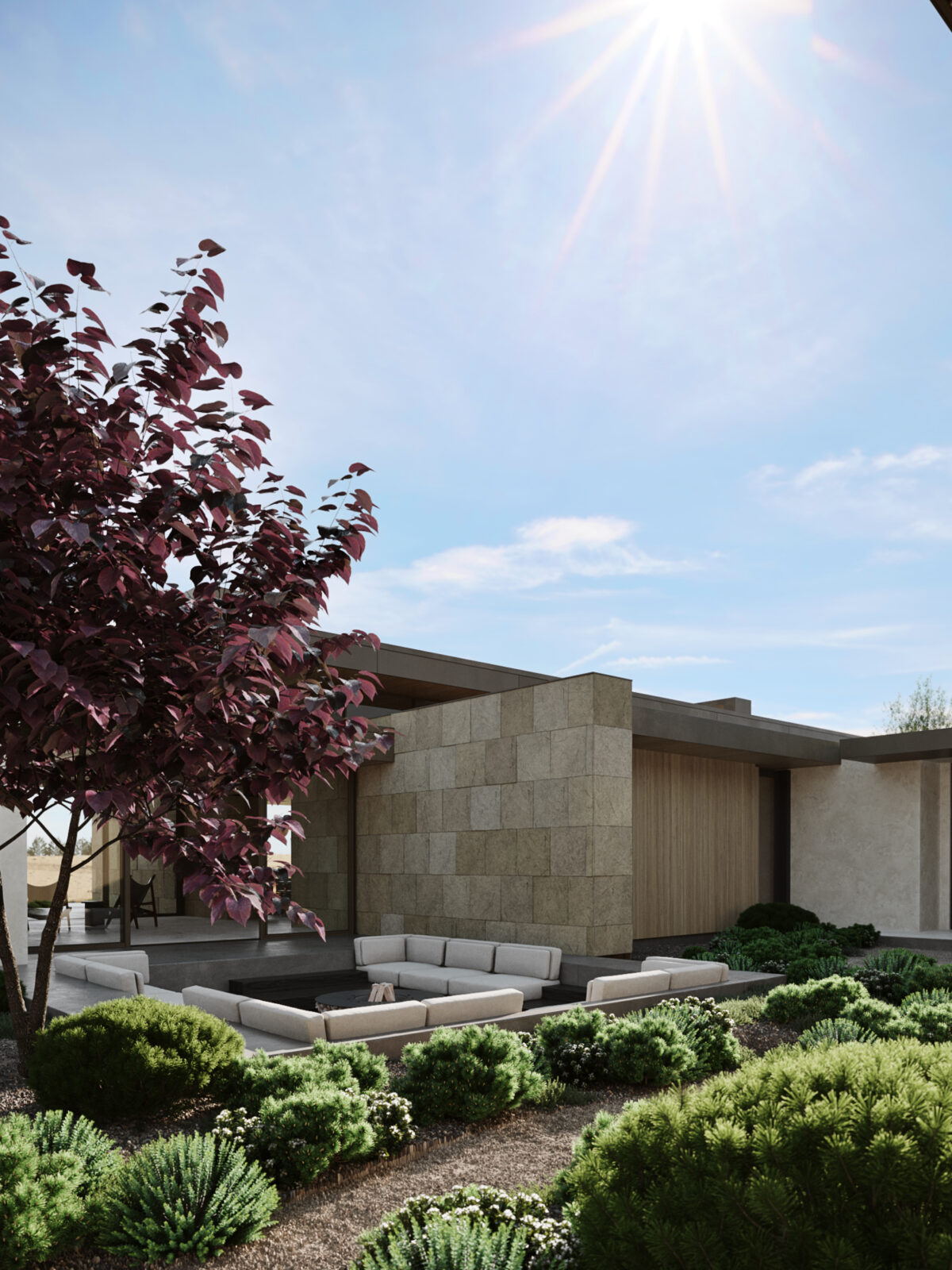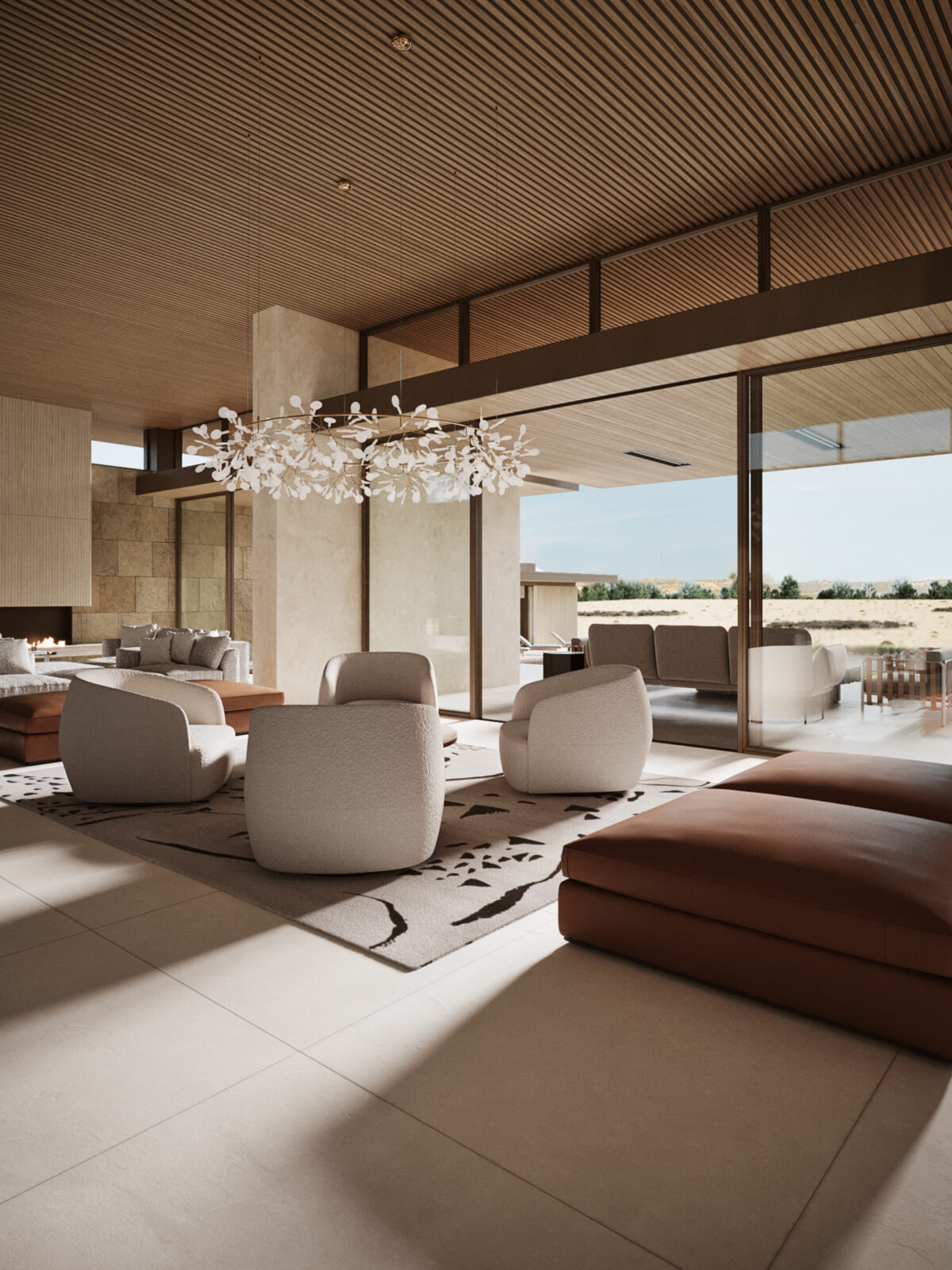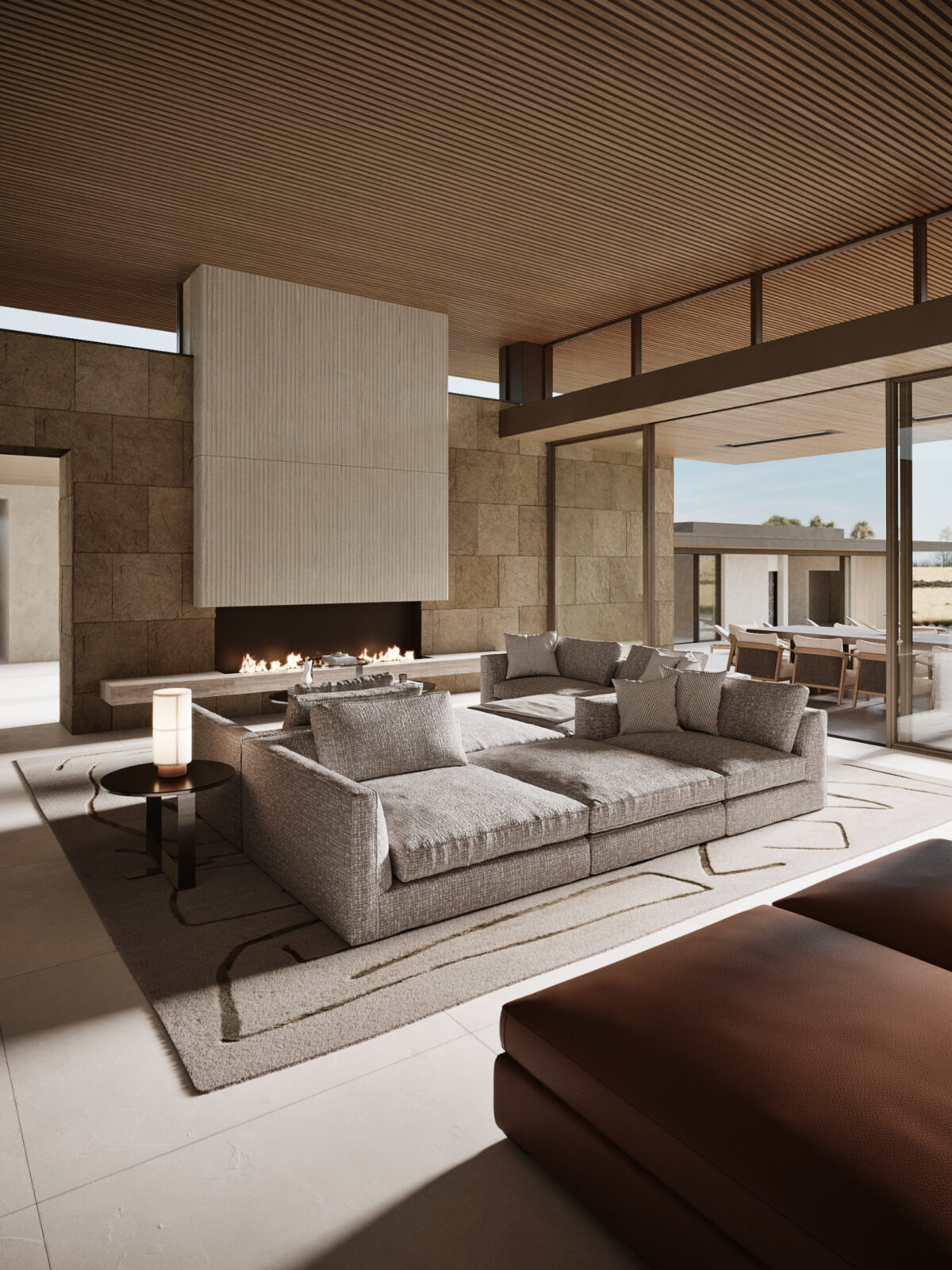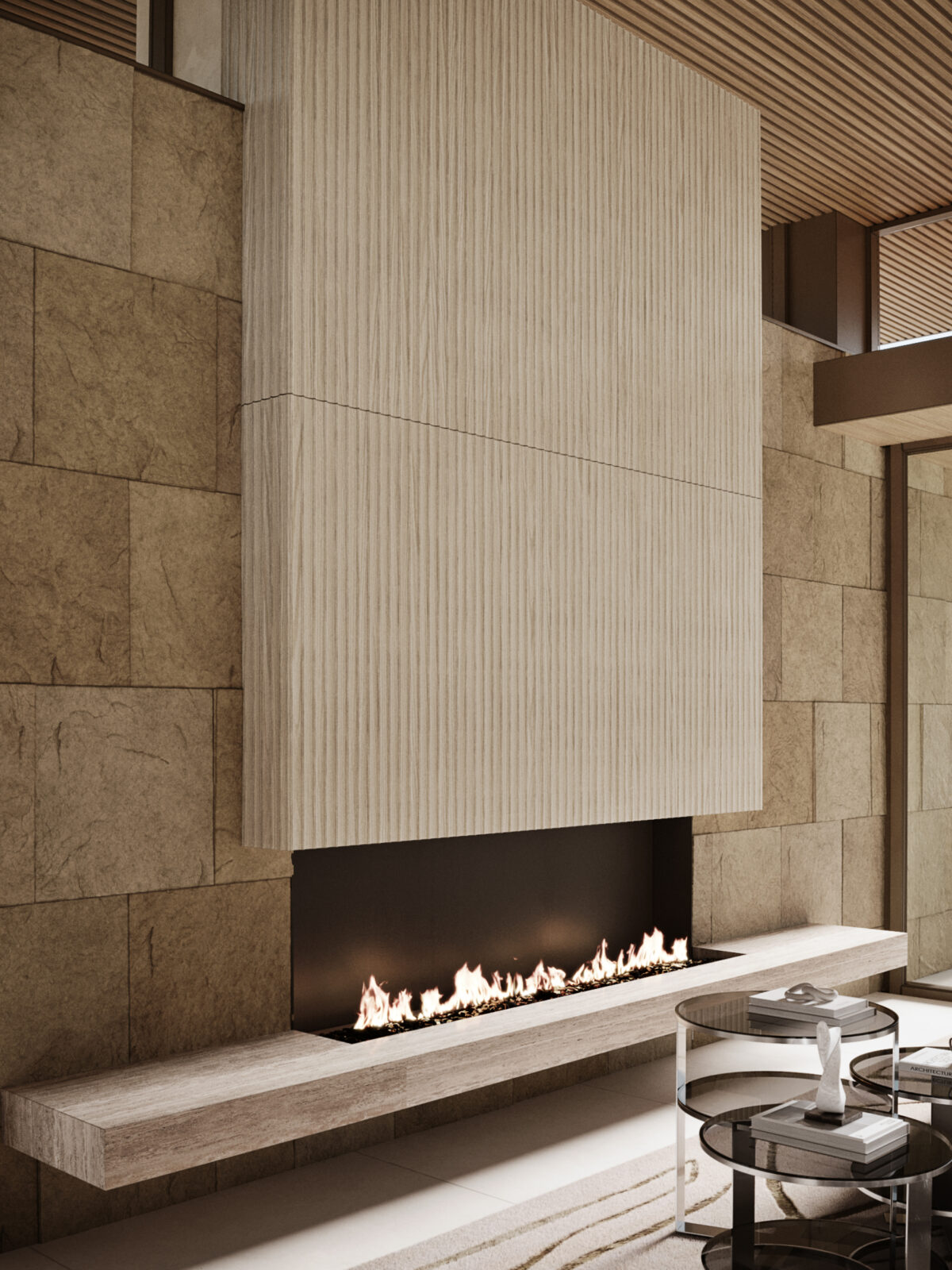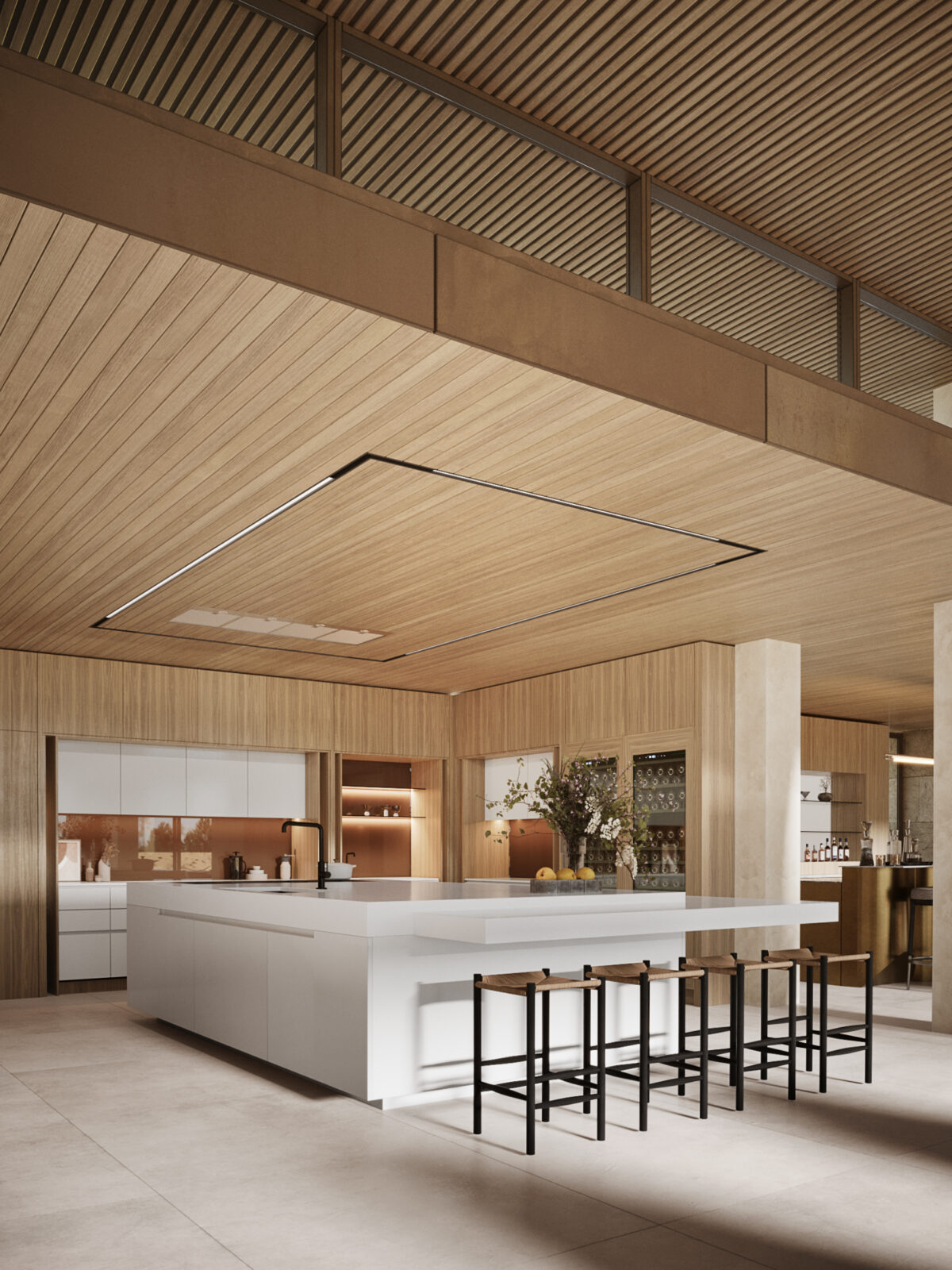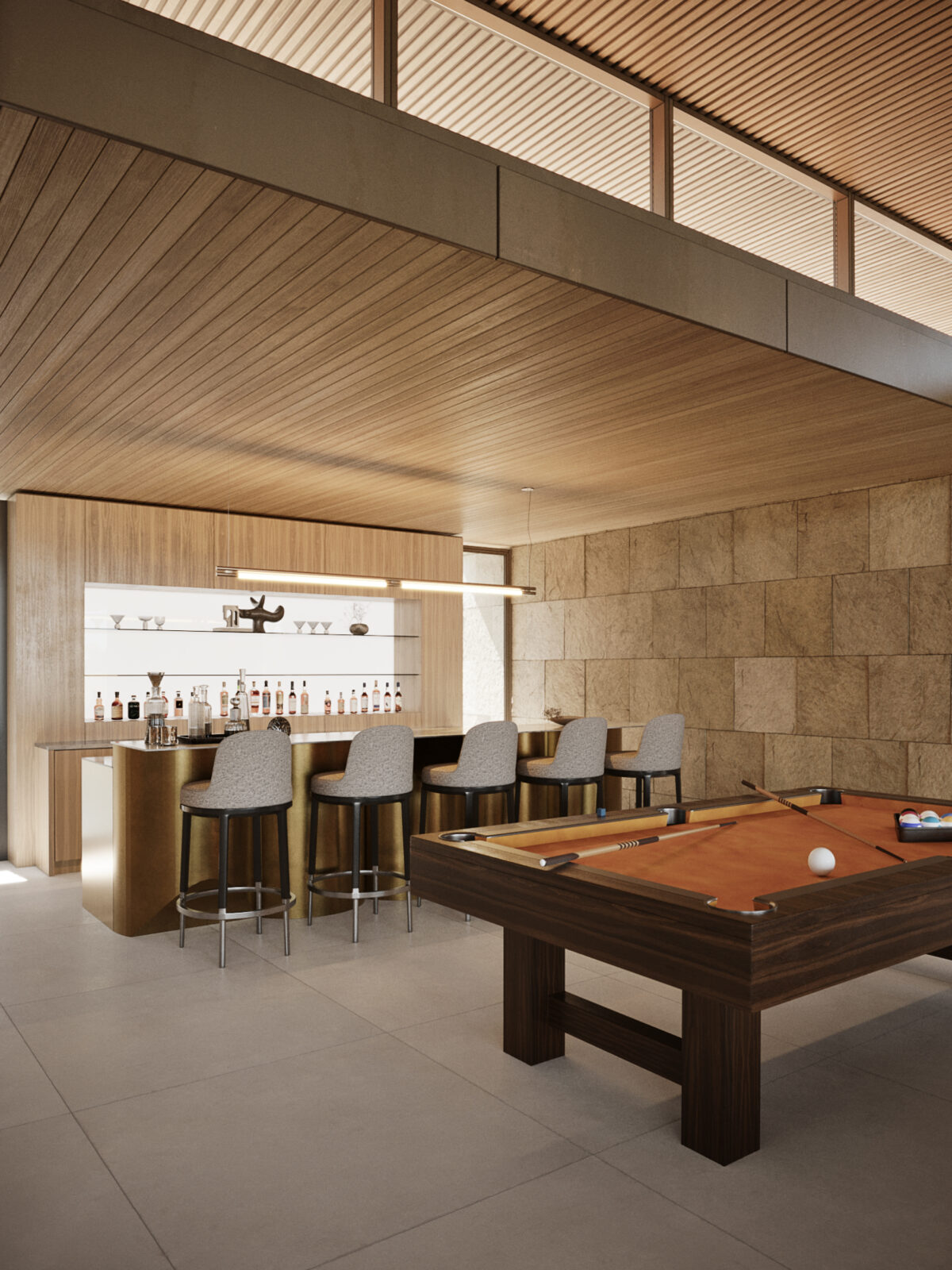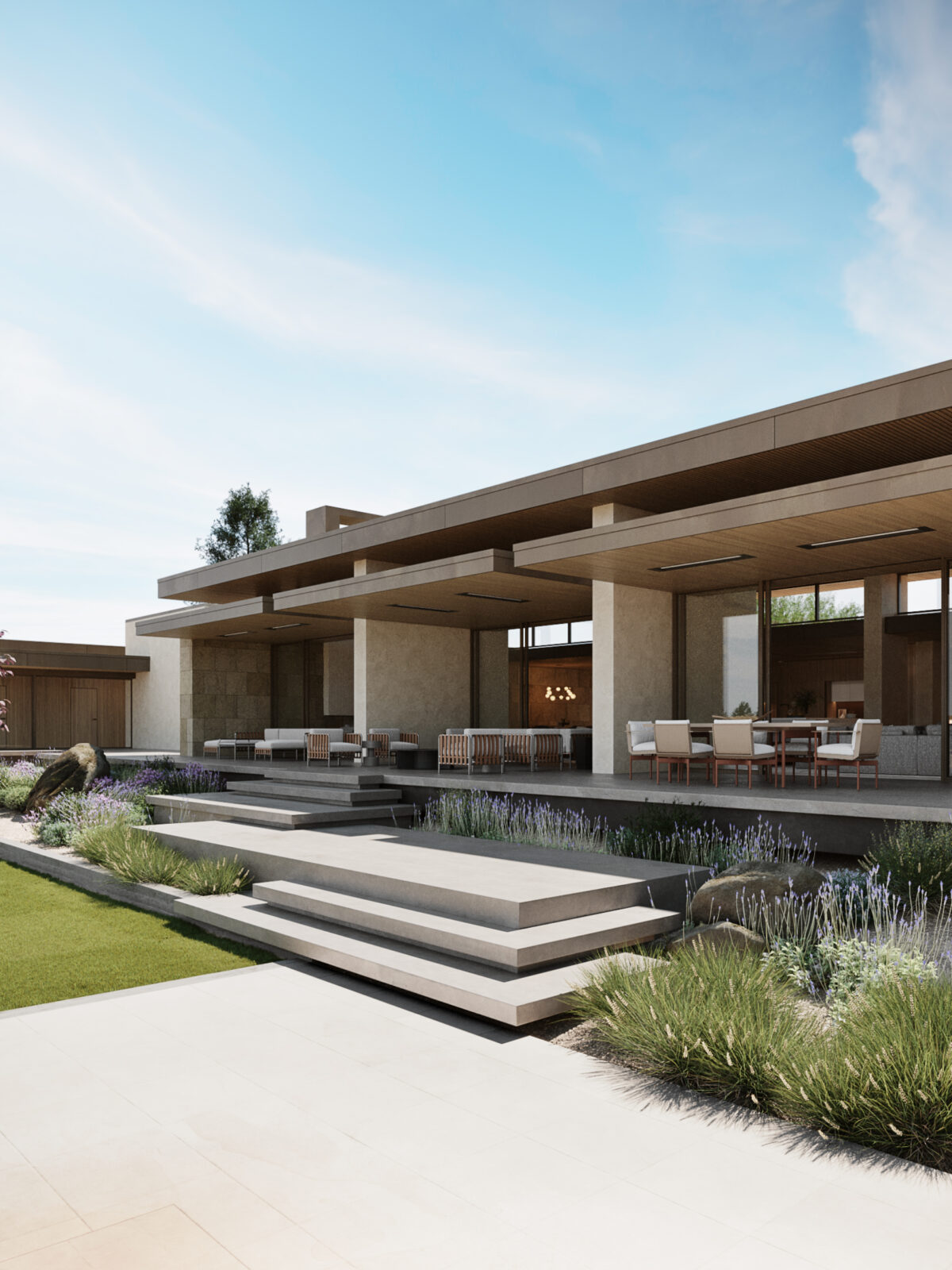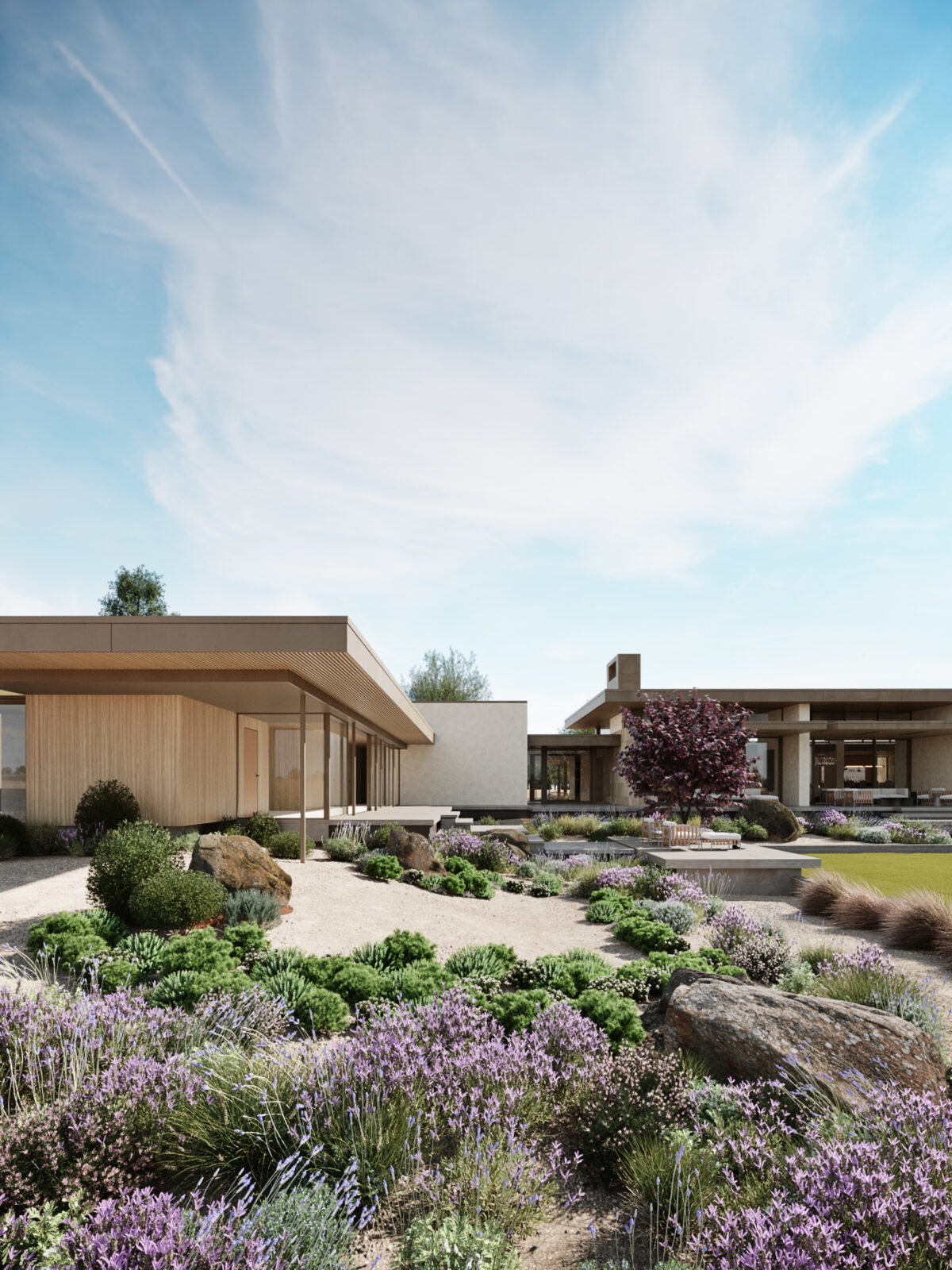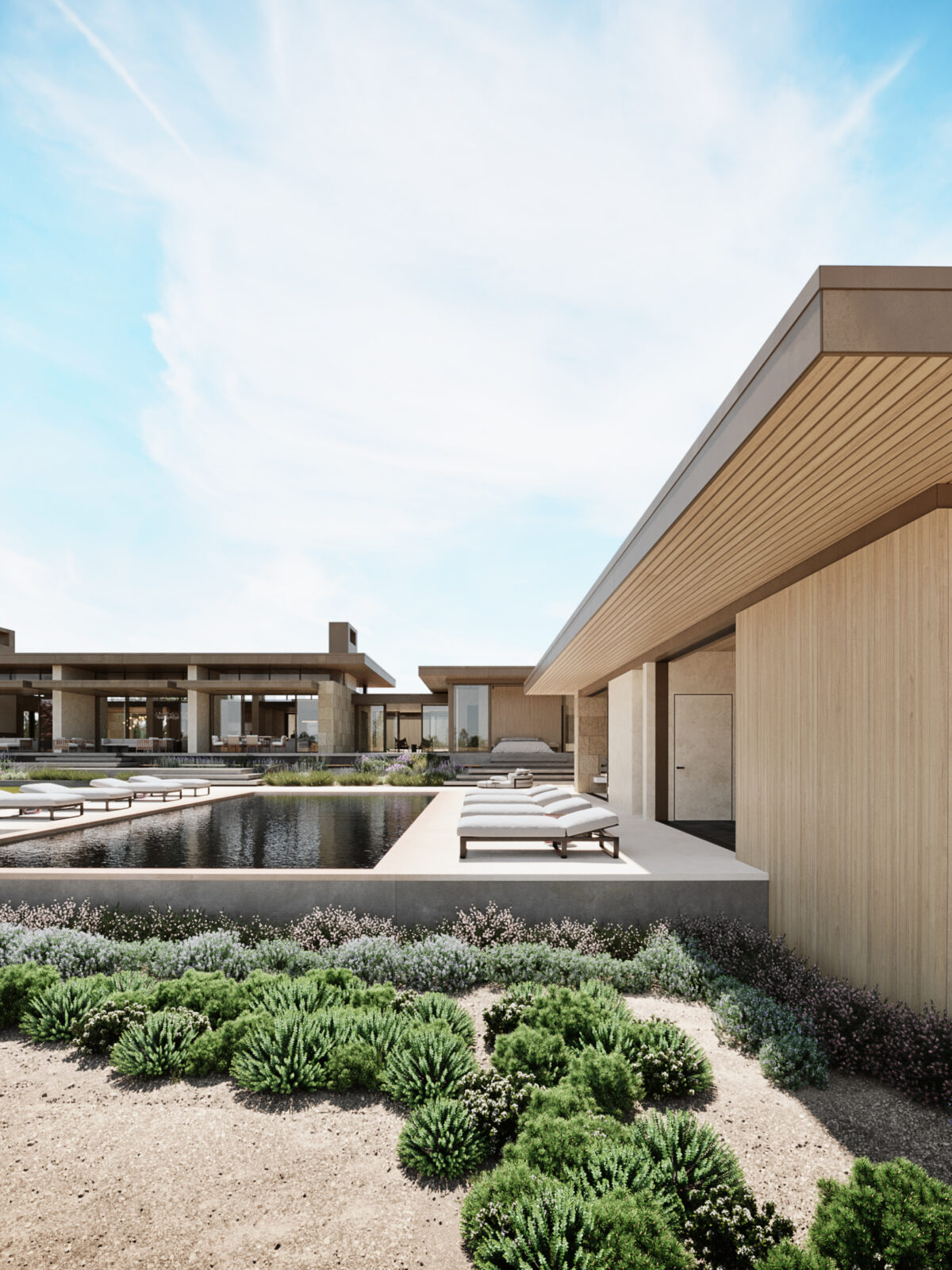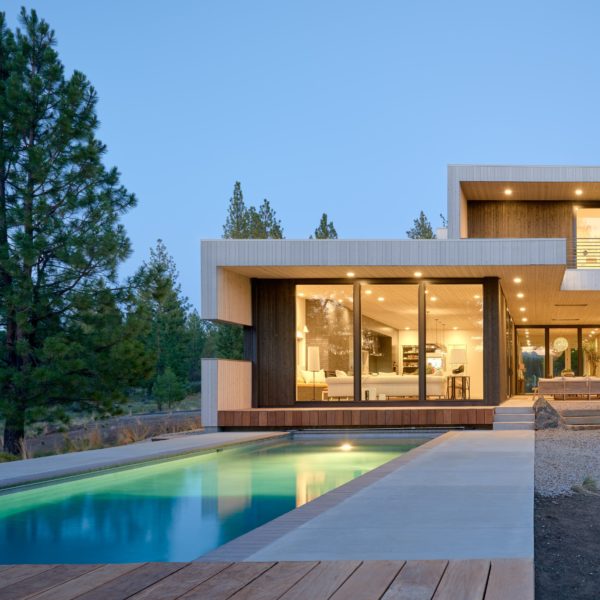Après House
Oregon
The Après House is composed of a series of connected pavilions which can be opened up to the surrounding landscape through moving wall systems and pivoting door panels. The building forms and perforated nature of the structure’s layout allow the landscape to permeate the design and engulf the living areas. The low slung building forms nestle themselves into the surrounding high desert meadow as they step down the gently sloped site.
A subdued color palette was selected to integrate the structure with the arid desert landscape. The pale gray and gold tones blend comfortably with the surrounding site’s clusters of rabbit and bitterbrush and meadows of wild rye grasses. Landscaped areas are composed of high desert appropriate drought-tolerant and fire-resistant plant species.
Programmatic clusters within the home are defined by the various pavilions: public spaces, guest bedrooms, primary suite, and entertaining areas are all contained within separate structures. A pool cabana shelters an outdoor living room, kitchen, fireplace, and exercise room as well as an outdoor shower.
The main pavilion contains separate zones for living, dining, t.v. watching, casual seating, a pub, and the primary kitchen. The kitchen at first glance appears ultra-minimalist but cabinet doors slide away to reveal a fully functional workspace supplemented by a hidden back-kitchen area for additional prep space. Monumental twin fireplaces anchor each end of the public wing while 10 foot tall hewn stone wall planes extend through the building and into the landscape, defining garden areas, creating privacy, and further connecting the structure to its site.
The main pavilion structure protects a hidden courtyard from west winds and afternoon sun. A cozy fire pit is sunken below grade and surrounded by an evergreen garden in a completely private outdoor living space. Horizontal roof planes extend beyond the walls at multiple levels to create deeply shaded zones which protect the interior from intense summer sun and deep winter snows as well as reflect indirect light into the home’s interior. Perforations in the roof plane allow trees to pass through and create open views to the sky from dining room and shower areas through oversized skylights.
Passive day-lighting strategies, triple pane window walls, and a 20kW photovoltaic array help to minimize the home’s energy consumption.
The result is a dramatic, graceful and enduring structure which defines a series of indoor and outdoor living spaces and takes full advantage of the high-desert climate and the area’s outdoor lifestyle.
This project is currently under construction.
Renderings by Halo Design Studio. Interior Design by Barbara Sumner. Landscape Design by Ani Cahill Design.
